Last week I wrote about the majesty of Victorian ball gowns and how there are few things I would rather look at. I can only imagine the splendor of an actual Victorian ball and a room full of more than a hundred people dressed in their 19th-century finest. Balls were more than just an opportunity to dress up, they were highly prescribed social events that demanded adherence to the understood etiquette of the day, with one’s reputation at stake. This week I have been combing through some of my favorite Victoria etiquette manuals and have learned a lot about what was expected out of party-goers and their hostesses during the heyday of the ball. I’m sure they were a sight to see, but I’m glad social events are more relaxed today!
Read my post on Victorian ball gowns here.
Make sure the ballroom is as full as possible
Each manual that I read for this post mentioned something about a ball not being a ball unless there were over 100 people present. Also emphasized was how important a full room was simply for the creation of a lively atmosphere.
The ladies’ book of etiquette, and manual of politeness; a complete hand book for the use of the lady in polite society, published in 1860 recommends a hostess over-invite:
“If you really wish for dancing, you will accommodate your guests to your rooms, inviting one third more than they will hold, as about that number generally disappoint a ball-giver. If you wish to have a rush of people, and do not mind heat, crowding, and discomfort, to insure an immense assembly, (a ball to be talked about for its size only,) then you may invite every body who figures up your visiting list.”
Over one hundred is a “large ball,” under that a “ball,” unless there are less than fifty guests, when it is merely a “dance.”
On the other hand, Manners, Culture and Dress of the Best American Society, published in 1890, offers advice to the hostess that I’m sure she found hard to get right:
“There should be no more invited than can find comfortable accommodations, both sitting ad standing-room being taken into account, and at the same time have the floor properly free for dancing. The more guests you have the more brilliant, and the fewer you have the more enjoyable, will the occasion be.”
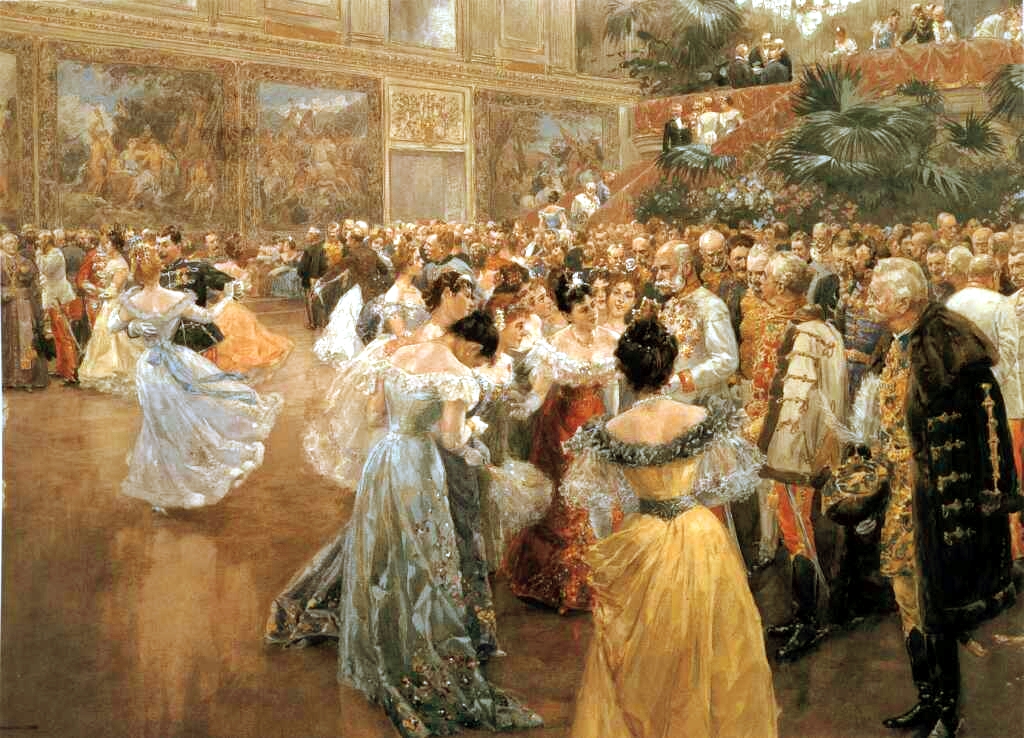
Being a proper hostess
Speaking of getting things just right as the hostess of a ball, The ladies’ book of etiquette’s author, Florence Hartley, seems to think that these women had nothing short of magic powers:
“You must be everywhere at the same moment. Not a guest must pass unwelcomed. You must introduce partners to all the wall0flowers. You must see that every set is made up before the music commences. Each guest must be introduced to a proper partner for every dance, one sigh of utter weariness must disturb your smiling serenity. You must be ready to chat cheerfully with every bore who detains you, when crossing the room, to make up a set of quadrilles in a minute’s time, or listen patiently to the sighing lover, whose fair one is engaged fifty times during twenty dances; secure a good dancer for each longing belle; do the same for the beaux; yet you must never be hurried, worried, or fatigued.”
My, how times have changed
The most striking thing to me about reading the 19th-century ball etiquette was the topic all authors seemed to emphasize the most: that a woman was under no circumstances to refuse a dance unless otherwise engaged. To do so would be not only an insult to the gentleman himself but also to the hostess, as it suggested poor taste on her part.
The ladies’ book of etiquette:
“At a private ball, no lady will refuse an introduction to a gentleman. It is an insult to her hostess, implying that her guests are not gentlemen. It is optional with the lady whether to continue to drop the acquaintance after the ball is over, but for that evening, however disagreeable, etiquette requires her to accept him for one dance, if she is disengaged, and her hostess requests it.”
The Lady’s Guide to Perfect Gentility, 1859:
“A lady cannot refuse the invitation of a gentleman to dance, unless she has already accepted that of another, for she would be guilty of an incivility which might occasion trouble; she would moreover seem to show contempt for him whom she refused, and would expose herself to receive an ill compliment from him.”
Manners, Culture and Dress of the Best American Society:
“In private parties, a lady is not to refuse the invitation of a gentleman to dance, unless she be previously engaged. The hostess must be supposed to have asked to her hose only those persons whom she knows to be perfectly respectable and of unblemished character, as well as pretty equal in position; and thus, to decline the offer of any gentleman present, would be a tacit reflection on the gentleman or lady of the house.”
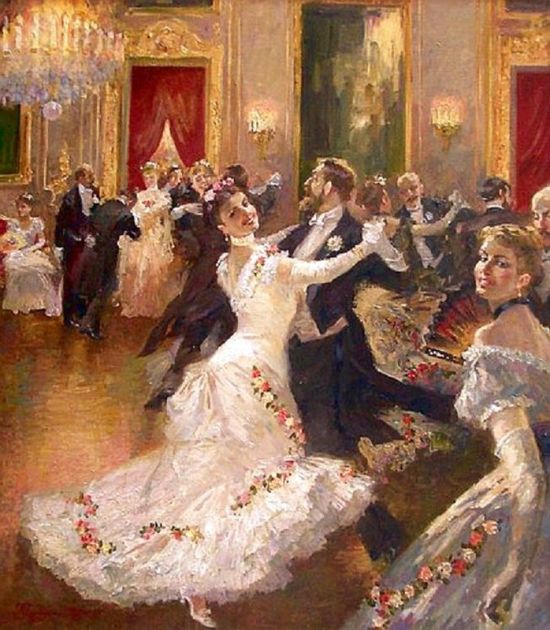
But that doesn’t mean we’re friends…
The most surprising thing I learned about Victorian ball etiquette is that while a woman was nearly forbidden from refusing a man a dance, it was equally stressed that he was not to assume an acquaintance existed outside of said dance. He was not even to acknowledge her if passing on the street.
Beadle’s Dime Book of Practical Etiquette for Ladies and Gentlemen, has something to say to both men and women about the extent of the relationship a dance suggests:
“These ball-room introductions are not regarded as introductions for a more extended acquaintance than for the evening. Should the parties afterward meet upon the street or elsewhere, let the gentleman be careful not to presume upon any recognition of the lady until she has first bowed. If she fails to extend this recognition, let the gentleman take no umbrage, for he has no real claim upon her acquaintance merely from a public ball-room introduction.”
“Any presentation to a lady in a public ball-room, for the mere purpose of dancing, does not entitle you to claim her acquaintance afterward; therefore, should you meet her, at most you may lift your hat; but even that is better avoided–unless, indeed, the first bow–as neither she nor her friends can know who or what you are.”
Have fun, but not too much fun
As someone who loves a fun evening laughing and joking with friends, this next piece of etiquette feels a bit painful. Women were encouraged to appear pleased, but not too pleased, with the evening’s festivities. My favorite quote about this comes from The ladies’ book of etiquette:
“There is much that is exhilarating in the atmosphere of a ball room. The light, music, company, and even dancing itself, are all conducive to high spirits; be careful that this flow of spirits does not lead you into hoydenism and rudeness. Guard your actions and your tongue, that you may leave the room as quietly and gracefully as you enter it.”
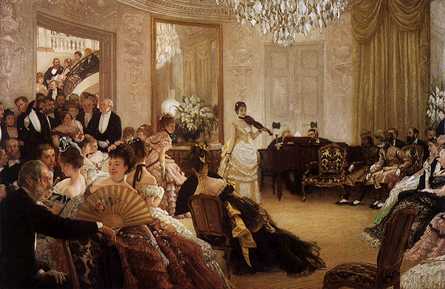
And don’t go talking too much, or too quietly
Much was said about the manner in which people should converse on the dance floor. The ladies’ book of etiquette states that women should avoid being too loud:
“Let your manner in a ball room be quiet. It looks very badly to see a lady endeavoring to attract attention by her boisterous manner, loud talking, or over-active dancing.”
But then later says that being too quiet should be avoided as well:
“Never allow your partner, though he may be your most intimate friend, to converse in a low tone, or in any way assume a confidential or lover-like air at a ball. It is in excessively bad taste and gives annoyance frequently, as others suppose low-toned remarks may refer to them.”
Manners, Culture and Dress of the Best American Society suggests women leave conversations out altogether:
“Ladies should avoid talking too much; it will occasion remarks. It is also a bad appearance to whisper continually in the ear of your partner.”
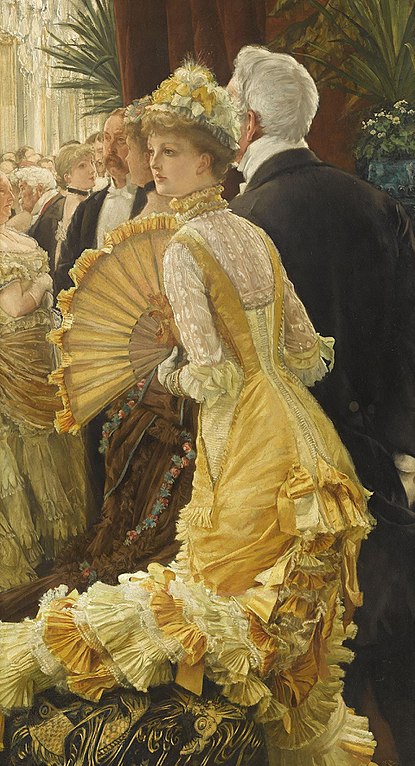
More Victorian ball etiquette:
Ball cards:
“Have a number of double cards written or printed with a list of the dances, arranged in order, upon one side, and a space for engagements upon ght other. Attach a small pencil to each. Let a waiter stand at the entrance of the ball room, and hand a card to each guest as they pass in.”
–The ladies’ book of etiquette
How to offer a lady a refreshment:
“When a lady has accepted refreshment, her attending gentleman should hasten to relieve her of her glass or plate; and, as her cavalier, should see that all her wants and wishes have been complied with.”
-Beadle’s Dime Book of Practical Etiquette for Ladies and Gentlemen
Don’t wait around to secure a partner:
“Never wait until the signal is given to take a partner, for nothing is more impolite than to invite a lady hastily, and when the dancers are already in their places; it can be allowed only when the set is incomplete.”
-The Lady’s Guide to Perfect Gentility
No wall flowers allowed!
“The master of the house should see that all the ladies dance; he should take notice, particularly of those who seem to serve as drapery to the walls of the ball-room, (or wall-flowers, as the familiar expression is,) and should see that they are invited to dance.”
-Manners, Culture and Dress of the Best American Society,
Now that you know Victorian ball etiquette, are you ready to prepare for a Victorian ball of your own? Enjoy our selection of gowns.
Do you love to learn about Victorian etiquette and culture? You may enjoy these posts:
Victorian traveling dress: guidelines for a proper lady

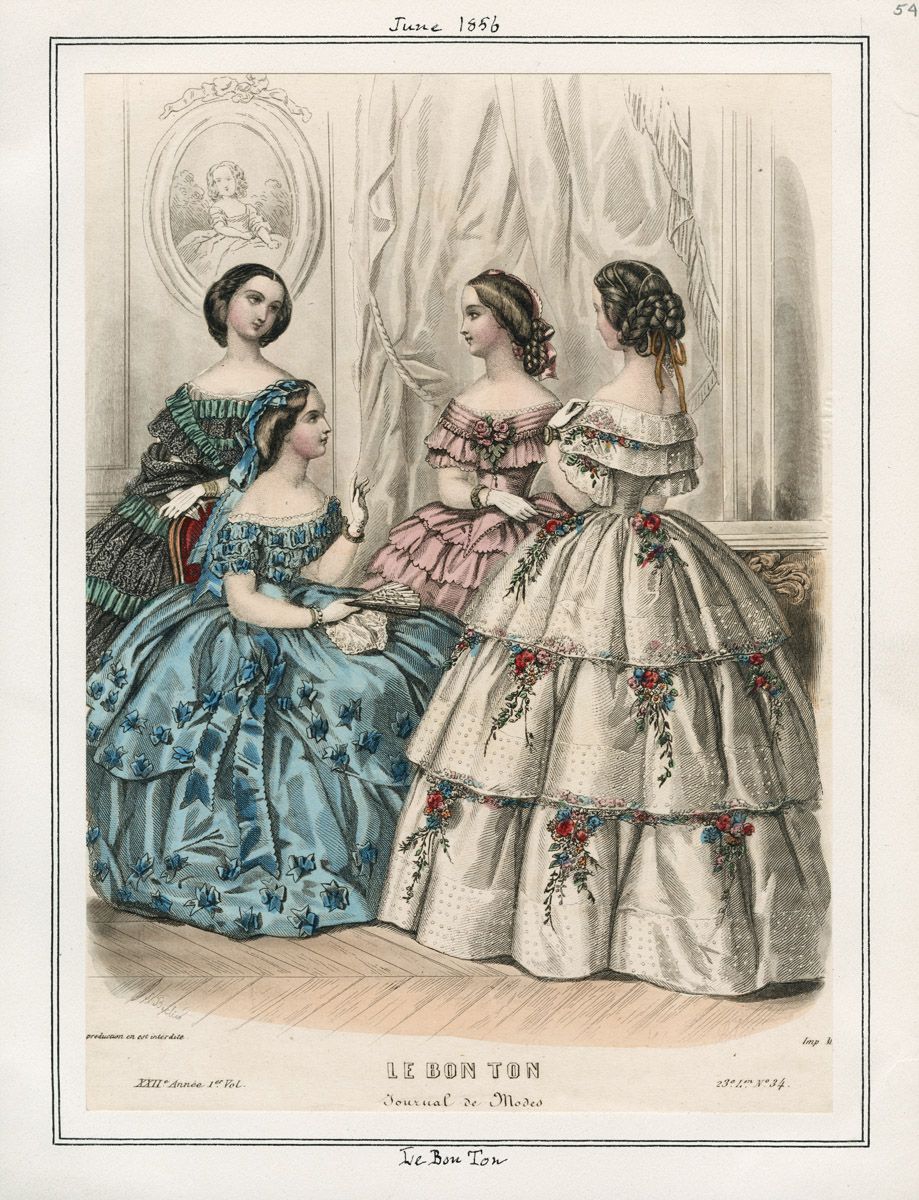
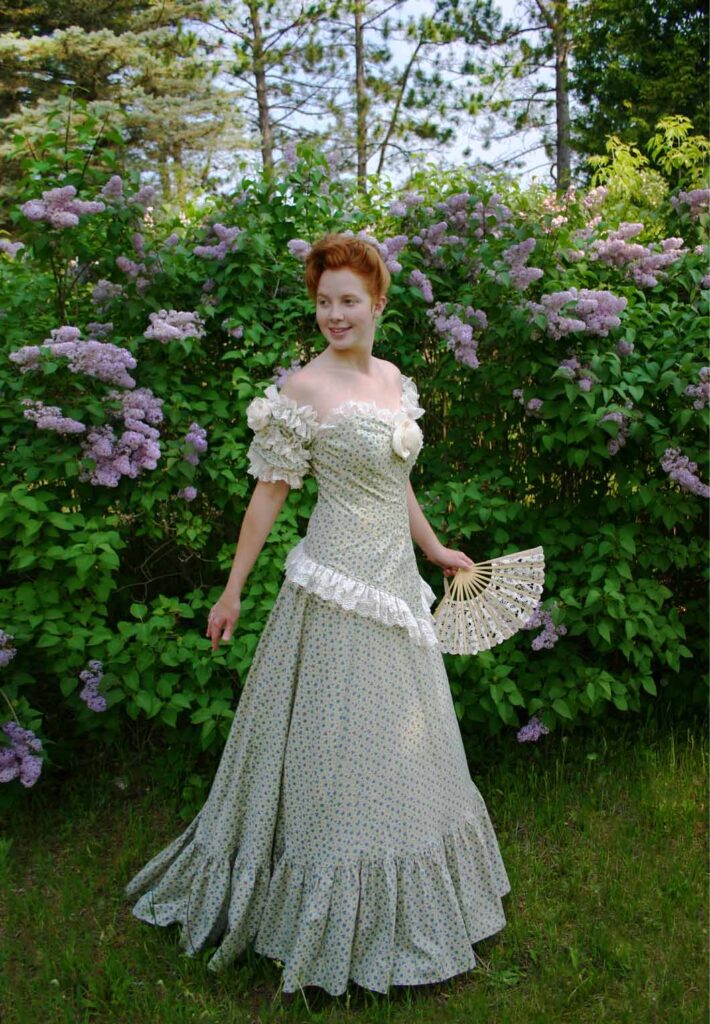












Leave A Comment